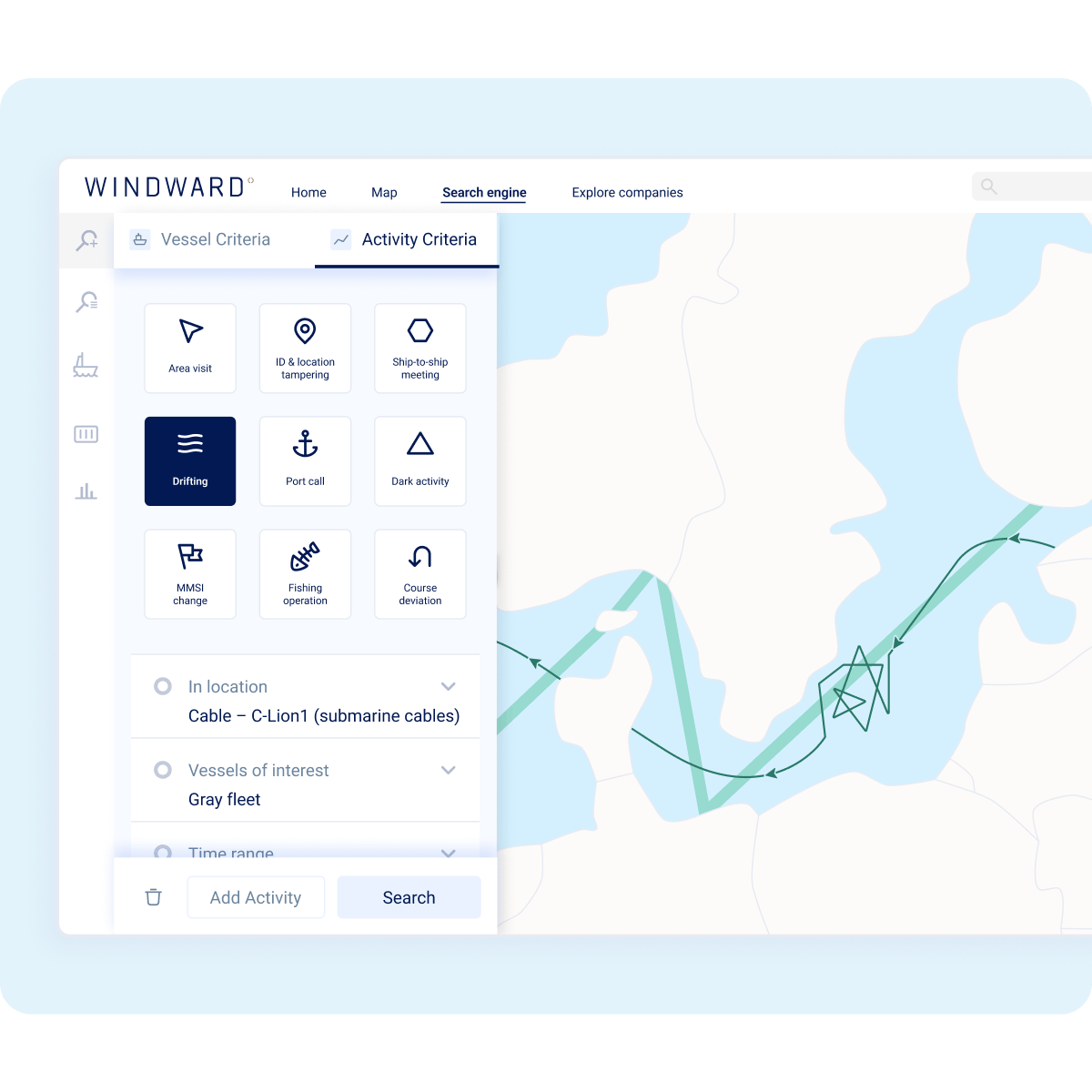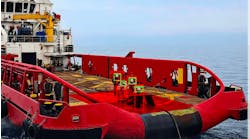Proactivity key in confronting new threats to offshore energy infrastructure
By Ami Daniel, Windward
Offshore energy infrastructure is a complex labyrinth of pipelines, rigs, subsea cables and other infrastructure. Used to extract, produce and transport energy (typically oil or gas), these systems comprise a critical piece of global energy supply. Today, they’re facing increasing threats.
Incidents such as the Nord Stream pipeline sabotage highlight the escalating vulnerability of assets that, if disrupted, could weaken economies and national security. These threats manifest differently across regions depending on the geopolitical context of the area. Further complicating these threats is that the remote, seaward nature of these systems makes them especially difficult to monitor, safeguard and repair.
So, what practical actions can private and government stakeholders take to protect them?
The threat landscape
The 2022 Nord Stream explosion was an omen for the rising rate of maritime sabotage, a trend validated by repeated cable disruptions in the Baltic Sea and near Taiwan. One common factor: maritime vessels engaging in dark activity nearby these incidents.
The Chinese ship, Shunxing 39, was suspected of disconnecting an underwater fiber-optic wire near Taiwan. Windward found that this vessel transmitted three false identities to shroud involvement in the incident. The recent Ukrainian attack on a Russian offshore gas platform in the Black Sea similarly exposed the vulnerability of such infrastructure.
Security challenges
Most maritime surveillance is unsustainably reactive, investigating incidents only after they occur. And as vessels find new ways to disable or manipulate tracking signals, traditional security methods like Automatic Identification System monitoring are insufficient. Needs also vary depending on the nature of the agency; some authorities prioritize historical tracking, while others require real-time monitoring.
Another complication is the involvement of both governments and private actors. The result is a gap where governments expect private companies to assume responsibility, while companies rely on governments for protection and enforcement. The lack of a common operational language between these worlds amplifies this gap.
Much of offshore energy infrastructure is in international waters, further complicating enforcement as no country has direct control. Even Exclusive Economic Zones don’t grant full sovereignty or legal authority, making it difficult to act against suspected bad actors.
Meanwhile, the volume of alerts continues to grow but “less is more” in this situation. An overload of alerts can paralyze decision-making instead of strengthening it.
Strengthening resilience
Proactivity is the keystone to upholding maritime security, and private companies cannot solely rely on governmental intelligence. Instead, a dual-layered approach that integrates government and private intelligence is needed to detect potential threats in real time rather than merely reacting after the fact.
Accordingly, the private sector must invest in independent intelligence capabilities, not only more tech, but also smarter typologies, risk assessment tools and commercial satellite data. Companies that prove they are mitigating risk in this regard can also benefit financially from reinsurance discounts. In turn, governments must bolster cross-border cooperation and coordinate efforts between international organizations, such as NATO and the European Maritime Safety Agency, and entities uniquely poised to facilitate rapid, cross-jurisdictional responses to security incidents.
Watery warfare
Offshore energy infrastructure is not just an operational concern. It’s strategic for both private and public sector stakeholders. Consider the worst-case scenario: simultaneous disruptions to a global network of energy and communications infrastructure would have earth-shattering national security implications and put the lives of millions at risk.
As infrastructure warfare becomes the next frontline of global conflicts, securing these critical assets must be a top priority for energy companies, utilities and national security agencies alike. The scale of risk demands a proactive, collaborative approach, and effective alignment across disparate sectors is the only way to protect offshore infrastructure from bad actors on the high seas.





